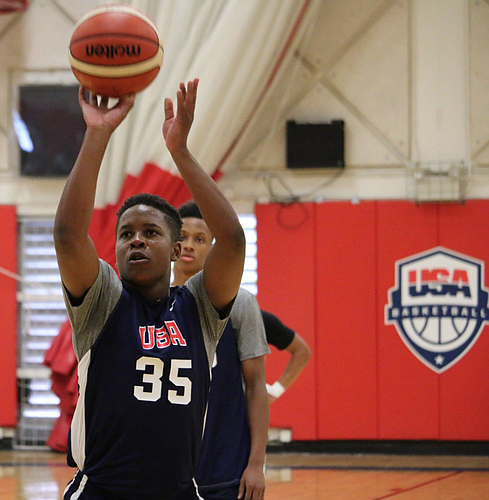Home »
Misc »
How to conduct basketball tryouts
How to conduct basketball tryouts
15 Basketball Tryout Drills for Efficiently Evaluating Players
When conducting tryouts, you want drills that allow you to efficiently evaluate players.
The key word here is “efficiently”. You only have so much time in tryouts to evaluate players. So you want to make good use of your time!
Tryout drills should be fairly simple yet similar to what you normally do in practice. If drills are too complicated, you’ll waste hours of time teaching new players “how to run” the drills. So simplicity is critical when choosing.
Drills should also accommodate varying degrees of ability and experience – since you’ll most likely get a wide variety of players at tryouts. Some players might be inexperienced yet have a lot of potential. You don’t want to exclude those players.
Here are the tryout 15 drills that I like to use. They are simple and effective in regards to evaluating players for your team.
Drill #1 – Learn Players’ Names with Circle Passing
Depending on your situation, you may or may not want to use this drill.![]() The main purpose is for me as a coach to learn the names of the players. However there are other benefits. You’ll find out which players put effort into learning names of teammates and who actually uses their names in practice. Players also get to meet new potential teammates and begin the bonding process.
The main purpose is for me as a coach to learn the names of the players. However there are other benefits. You’ll find out which players put effort into learning names of teammates and who actually uses their names in practice. Players also get to meet new potential teammates and begin the bonding process.
To conduct the drill, players get in a circle (close enough to reach out and touch the person next to them). Instruct players to learn the name of the person standing on their left and their right. Then as the ball is passed, the player receiving the ball will say their own name, and the names of the players next to them. Then they pass to a different player. This repeats until someone knows the name of everyone there… it can be a player or a coach that recites the names of each player.
Drill #2 – Full Court Dribbling and Finishing
This simple drill gives you a good idea of a player’s all around dribbling skill and idea if they can make uncontested lay ups.
Drill #3 – Full Court Dribble with Weave and Finish
This is very similar to the drill above except it adds a cone dribbling aspect that can be telling. Make sure they spread out so you can watch close. Here’s a progression you can use:
- 2 ball dribble (no shot)
- Cross overs and then retreat at wing area
- Cross overs and then fan (lateral) dribble at wing area
- Behind back
- In/out
Drill #4 – Form Shooting
Even though this is an evaluation, I still want players to practice the “right away” and start with form shooting. This drill also allows you to evaluate who listens to instructions closely.
Drill #5 – 3 or 4 Player Shooting
Very simple drill that gets players a high number of reps. I usually start with mid-range shots for a few minutes. Then for older players I instruct them to move out to 3pt range.
Drill instructions: 2 balls and 3-4 players per basket. Each player shoots and gets the rebound. As soon as Player A shoots, Player B shoots and repeats the process. Player A passes to B, B passes to C, C passes to A. Players get an average of 14 shots per minute.
Each player shoots and gets the rebound. As soon as Player A shoots, Player B shoots and repeats the process. Player A passes to B, B passes to C, C passes to A. Players get an average of 14 shots per minute.
Drill #6 – 2 Person Full Court Passing
Passing drill that is very quick and easy to set up for players new to your system.
Drill #7 – Pass and Cut Lay Ups
Really simple drill. Line on top of key and line at wing. Wing player has ball. Pass to top, cut, and receive a pass back for lay up. You’ll see who can pass to a player on the move and who can make lay ups. Also preps players for basic pass and cut offense when we scrimmage at end.
Drill #8 – Footwork Drill – Partner Pass and Pivot
This drill gives you an idea of a player’s footwork skill. I also like to use this drill before the next drill (3 on 2 no dribble). Because I can refer to the jump stops and pivots they are practicing now.
Drill #9 – 3 on 2 full Court – No Dribble
Gives you a good idea on who can pass the ball, pivot, and make good decisions.
Drill #10 – 1 v 1 full court
Real simple. Check the ball and play 1v1 full court trying to score. Make sure players switch around going against different opponents. This really tells you who can defend, who can handle the ball, and how well players move. This is a very telling drill.
To get more reps we use both side courts. After a possession, players go to other court (offense goes to defense) — so they are essentially rotating in a big circle.
Drill #11 – 1v1 Speed Dribble
Shows you who can handle the ball at full speed, who can finish under pressure, who can run fast, and who is a competitor.
Drill #12 – Shell Drill
We like to run the shell drill. This tells us right away if a player knows anything about defensive fundamentals. It also gives us an idea of who learns quickly and listens to instructions.
It also gives us an idea of who learns quickly and listens to instructions.
Drill #13 – Basic Offense
Explain our motion offense: “we just want spacing and ball movement until you get a good shot.” Then practice a little 5 on 0 motion — 5 v 0 pass and cut, and 5 v 0 pass and screen (if time).
Drill #14 – Speed and agility drills
In some cases we have players race so we can compare their speed and agility. You can simply have them line up in rows and then race to end of gym, run shuttles, or use agility drills like the lane agility test.
Drill #15 – Scrimmage
At the end of tryouts we let them play. Self explanatory. If we have a lot of players, we try to split them up on multiple courts. We also keep the games short… 5 min games or first to 5 points.
Final Thoughts
You probably won’t have time to use all 15 of these drills in one practice — but hopefully this gives you some ideas on drills you can use at your next tryouts.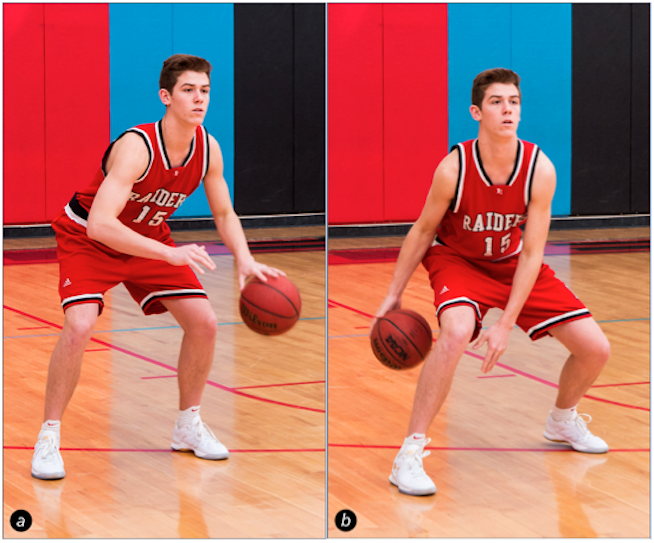 These are all drills that have worked well for us in the past.
These are all drills that have worked well for us in the past.
1.5K Shares
- Facebook
- Pinterest
- Twitter
- More
11 Drills for Your Next Basketball Tryout
After months of uncertainty due to the coronavirus outbreak, your youth basketball club may be anxious to get back to work and welcome the players back for a new season. The first step may begin with tryouts.
As your organization prepares for player evaluations, consider running these drills to get a complete view of each athletes’ abilities to place them on the right roster.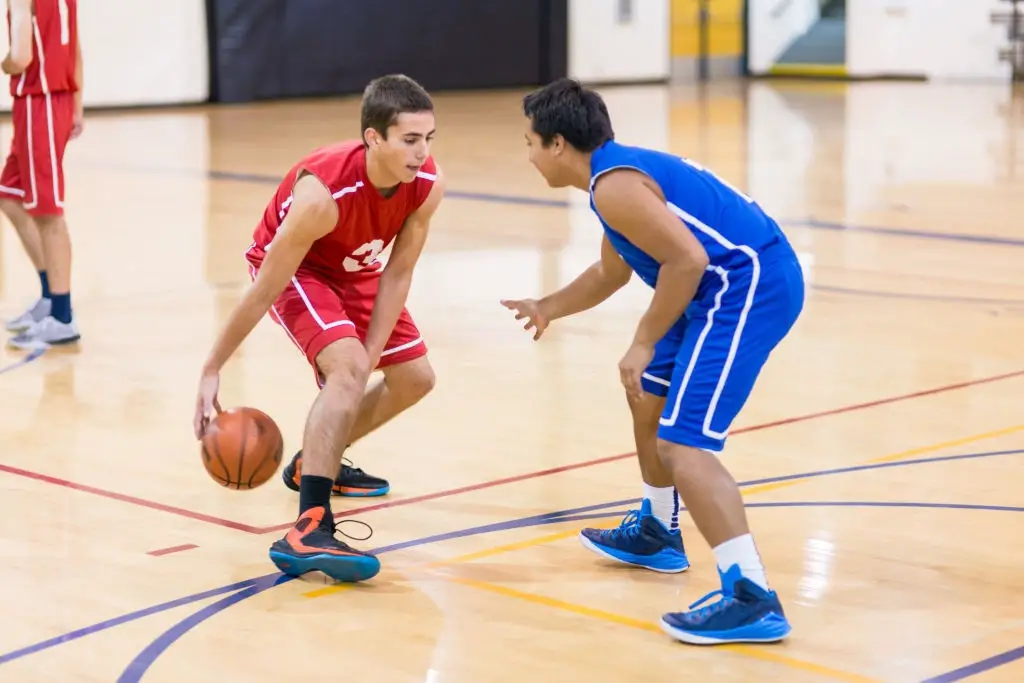
DribblingIt’s important for athletes on your team to be able to take care of the ball when dribbling and setting up plays. To test players’ ballhandling skills, run the following drills:
Full Court Dribbling with a Lay-upFor this drill, form two lines of players on opposite sides of the court, near each basket. Place two cones (or chairs) at half-court, one on each side. Have the first player in each line start by dribbling down the court and perform an assigned dribble move at the cone (a cross-over, in and out move, etc). They should then continue to dribble down the court to the basket and finish with a layup. This allows you to test their dribbling skills and their layup abilities at the same time. If the player misses, he or she should get his or her rebound and run to the back of the line. After the first player finishes, the next player in line will go. Both lines should perform the drill simultaneously.
Full Court Dribble with WeaveThis drill should be performed similarly to the drill above, except with additional cones set up in the frontcourt.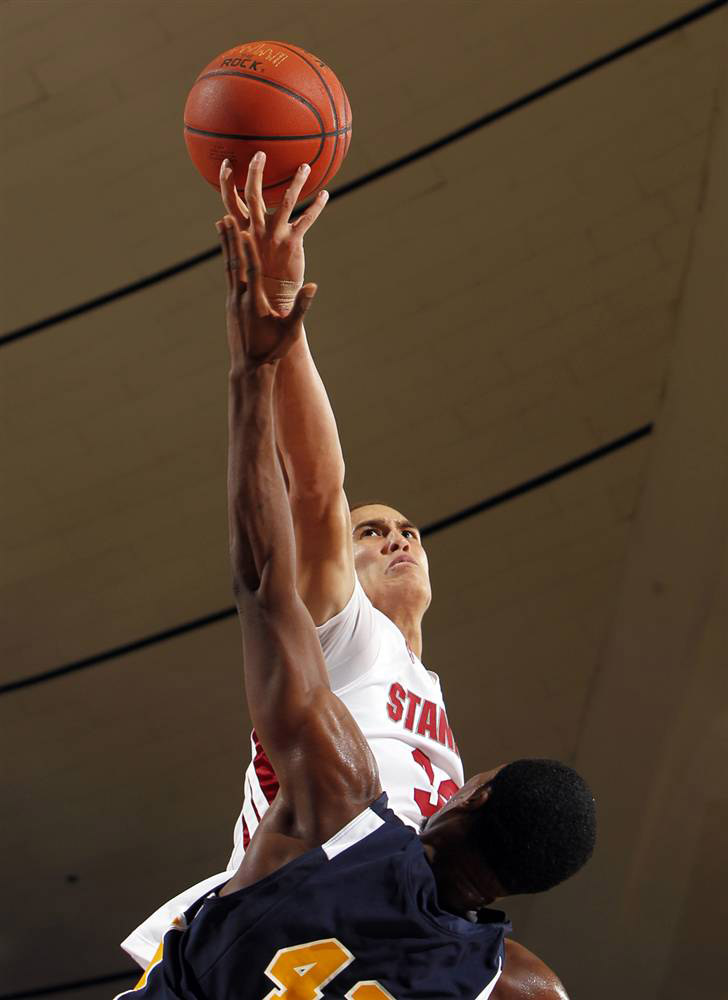 Have players weave through the cones with the type of dribble move you assign to them. They should then continue to dribble down the court and finish with a layup or another type of shot.
Have players weave through the cones with the type of dribble move you assign to them. They should then continue to dribble down the court and finish with a layup or another type of shot.
PassingPassing is another critical skill to evaluate in players. Consider using this drill when testing athletes’ passing abilities.
Pass-Pass DrillIn this drill, have two players pair up facing each other. They should be about 12-feet apart (the width of the lanes line). Have them throw chest passes to each other as they travel down the court. They should finish with one player making a layup. To start, the players should make six passes down the court. Then they should reduce it to five, then four, then finally three. This will test the players’ arm strength and their ability to catch long passes.
ShootingYour club needs to score points to be competitive, making it important to evaluate players’ shooting skills. Consider having players perform the following drills.
Consider having players perform the following drills.
Five Spots Shooting DrillTo check players’ form, have them shoot at close range from five designated spots in front of the basket. They should shoot at each spot until they make five shots in a row. Then they should move on to the next spot. The goal is to make 25 shots in a row.
Quick Shooting In this drill, set up seven orange cones positioned in a semi-circle about 15 feet from the basket. One player starts by taking a shot at one of the cones. They should get their own rebound and dribble back to the nearest cone to take another shot. Run this drill for 1 to 2 minutes. Evaluators should keep track of how many shots each player makes.
Free ThrowsTo evaluate how athletes perform at the free-throw line, have players shoot 50 free throws, 10 at a time. Record how many each athlete makes.
LayupsLayups require different skills than shooting. Use this drill to test athletes’ layup abilities.
Use this drill to test athletes’ layup abilities.
Speed LayupsThis drill can test players’ speed and their ability to make a layup. Have all of the players lineup behind the baseline. Give the first player in line the ball and have him or her dribble as fast as he or she can down the court and attempt a layup on the left side of the basket. The player should get his or her own rebound and then dribble as fast as he or she can back down the court and attempt a layup on the right side of the basket. Once he or she completes the drill, the next player in line goes.
DefenseDefense can be just as important as offense during a game. To test players’ defensive skills, run the following drill.
Defensive SlideFor this drill, set up cones in a zig-zag formation, about 15-feet apart. When the coach blows the whistle, players take short steps without crossing their legs from the first cone to the second.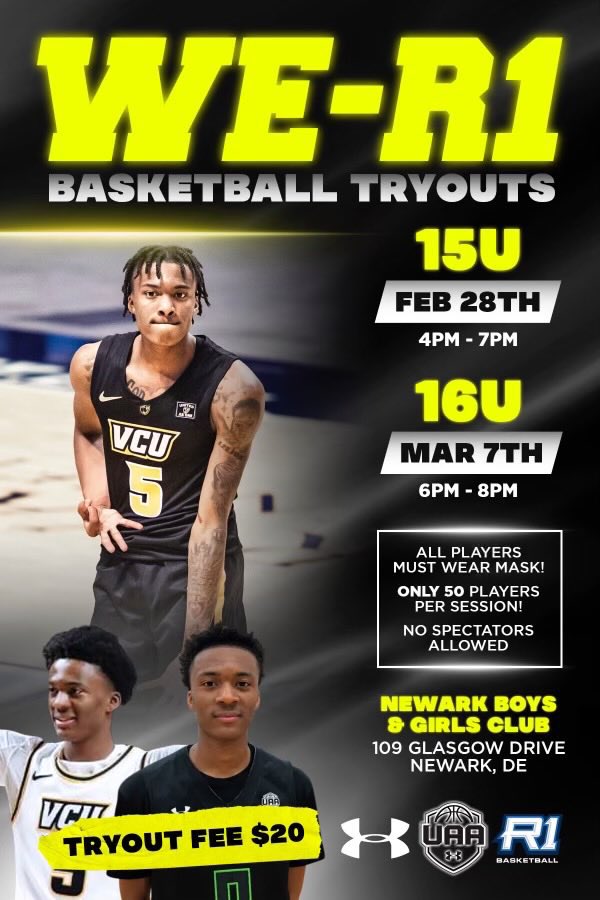 They should then pivot 180 degrees and slide to the next cone. This is a speed drill, so each player should be timed. If a player crosses his or her feet or falls, he or she must start the drill over.
They should then pivot 180 degrees and slide to the next cone. This is a speed drill, so each player should be timed. If a player crosses his or her feet or falls, he or she must start the drill over.
ScrimmageThe best way to test athletes’ offensive and defensive skills is in game-time action. During tryouts, this can be done through various types of scrimmages. You can have players take each other on one-on-one, with small teams during a three-on-three scrimmage, or through a full five-on-five scrimmage. These games can showcase how players react in game-time action, how they move on the court, and how they perform in a competitive situation.
At-Home Tryout DrillsThe coronavirus outbreak may limit how you are able to hold tryouts, depending on the situation in your area and what safety parameters your club is following. If COVID-19 prevents your organization from holding in-person evaluations, consider having players tryout via video submissions.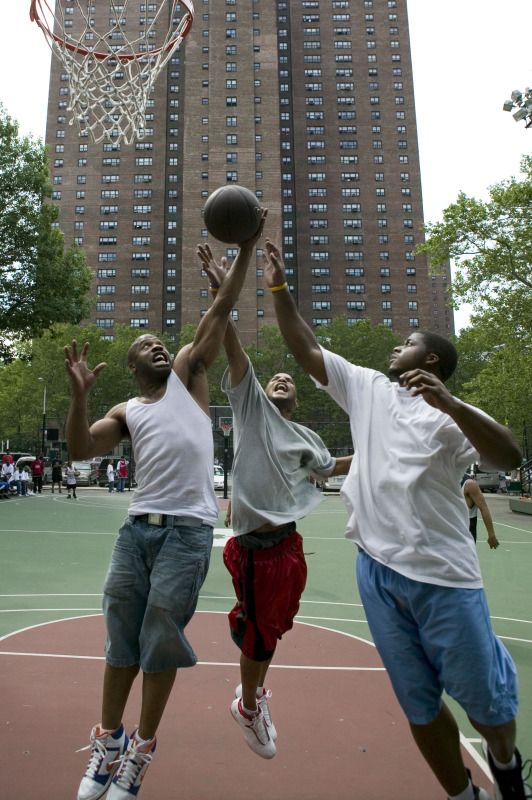
In these situations, you can have players perform the following drills:
Shooting: Designate where in relation to the basket players should shoot from and have them set up markers at a basket at their home or in a park. Have a parent or friend record the player taking each shot. Players can perform the layup and free-throw drills described above. If performing in their driveway, athletes might have to work with a smaller court or alternate attempting layups from the right and left side.
Ball-Handling Skills: To test players’ ball-handling skills, you can have them perform the dribbling drills outlined above, adjusted to fit the size of the court they have available to them. To demonstrate their passing skills, athletes can ask a parent or sibling to partner with them to perform the passing drills. If the athlete cannot find a partner to perform the drill with, instead have the player pass to designated targets. Players can set up markers – such as cones or chairs – and pass to them to showcase their accuracy.
Defense: Players can perform the Defensive Slide drill described above in their driveway or at a park while their parents record them.
Scrimmage: To supplement scrimmage drills, you can request players submit game films from the previous season to show evaluators how they perform in-game situations. Clubs can also ask previous coaches to submit videos or past games if players don’t have footage.
About TeamGeniusTeamGenius is a basketball tryout player evaluation mobile app and website to streamline the entire tryout process. Our player evaluation software covers everything from player check-in to analyzing results and placing players on a team after tryouts.
Learn more about TeamGenius here >
An outdoor game as a means of teaching basketball at school
One of the the main ways of comprehensive development of motor qualities in school conditions is the use of special exercises and outdoor games.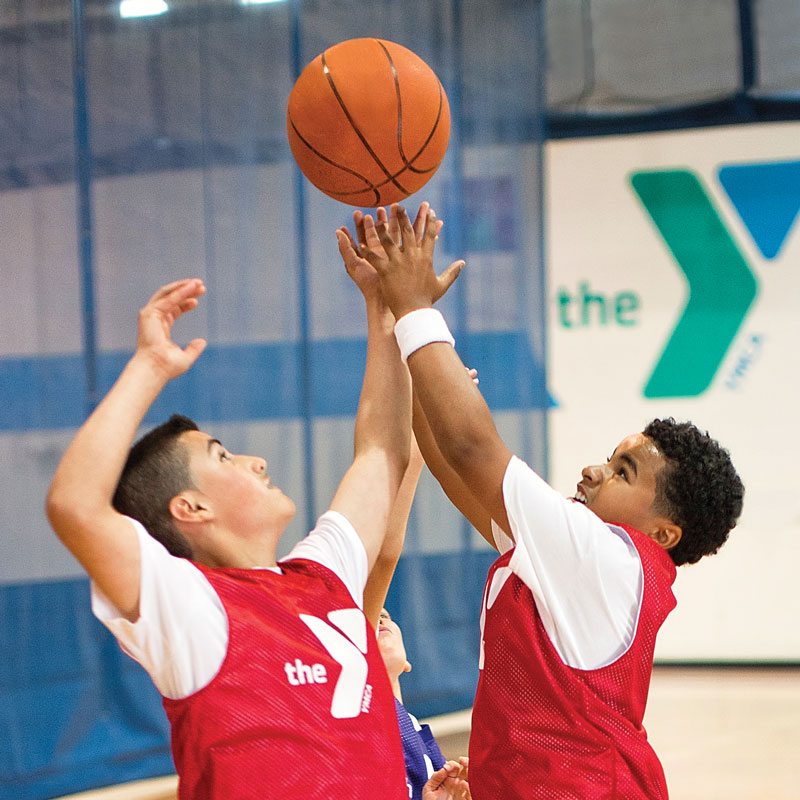 Game models many sports activities, including basic natural movements, therefore, it is recommended as an effective means of mastering such sections as athletics, skiing, swimming, sports games.
Game models many sports activities, including basic natural movements, therefore, it is recommended as an effective means of mastering such sections as athletics, skiing, swimming, sports games.
Game for students is an important means of self-expression, a test of strength. Mobile games have bright pronounced emotional character. While playing, the student experiences the joy of the physical and mental effort necessary to achieve success. Games fully reveal the positive and negative traits of character, and this has great importance for the better learning of students. When properly organized, they always give pleasure, create a good mood. Evolves in games initiative, organizational skills, independence, ability to think, discipline (observance of the rules of the game, respect for the opponent, submission to personal success to the interest of the team).
Games played must always correspond to the age and preparedness of the players, to be accessible, simple in content, interesting and exciting.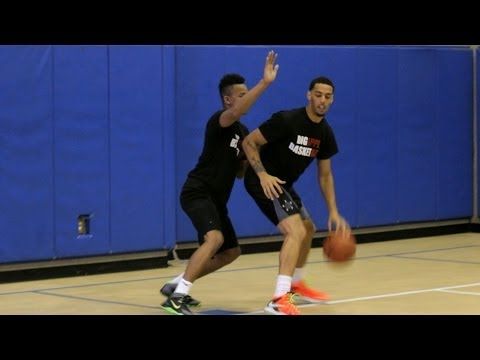 Games complex is compiled so that it contains games with different content and load. If new games are introduced that were not completed in the lessons, then in one their occupation should be no more than two: one with great mobility, the other - relatively calm.
Games complex is compiled so that it contains games with different content and load. If new games are introduced that were not completed in the lessons, then in one their occupation should be no more than two: one with great mobility, the other - relatively calm.
New game should be explained briefly and clearly, show some actions before it starts, and not in progress. If the game is already familiar, then you can limit yourself to a reminder basic rules. It is permissible to interrupt the game in exceptional cases, since a break leads to a dampening of the behavior of students and a loss of interest. An outdoor game increases the motor density of the lesson, since those not involved in play activity is almost non-existent.
Games to follow finish in an organized manner, and at the end it is necessary to take stock: to announce results and explain them, note the positive and negative sides, show the skillful use of the learned movements and shortcomings, give advice. To debriefing should involve the participants themselves. This will contribute fostering an objective assessment of both one’s own actions and the actions of comrades, the ability to identify the reasons for victories and defeats. The teacher must summarize tactfully, calmly, benevolently.
To debriefing should involve the participants themselves. This will contribute fostering an objective assessment of both one’s own actions and the actions of comrades, the ability to identify the reasons for victories and defeats. The teacher must summarize tactfully, calmly, benevolently.
Outdoor games play a big role in mental and physical development: help develop various muscle groups, coordination movements, contribute to the development of thinking.
One of the most valuable aspects outdoor games - mass character and complex impact on the physical readiness.
When learning to play Basketball requires a choice of means and methods of various directions. One of which is a competitive game, which is recommended for use on stages of consolidation and improvement of the gaming skill.
In class basketball, they first study the basic techniques, without mastering which it is impossible perform more complex tasks correctly.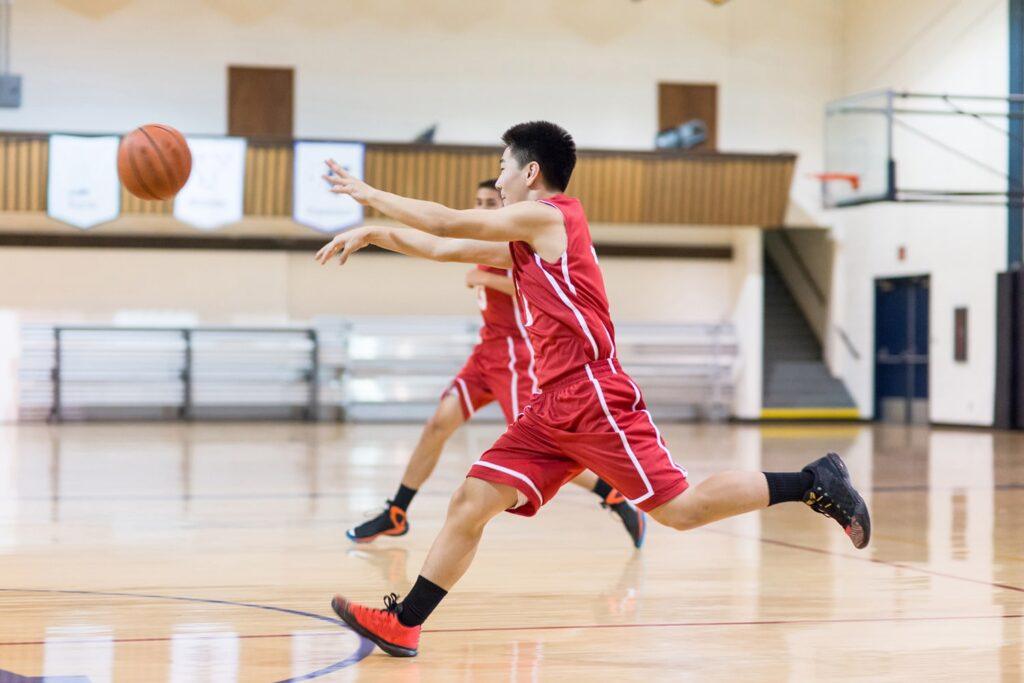 First of all, they teach the stance and movement of players in attack and defense. Then catch, pass, dribble ball. As they master the skills of passing the ball, they begin to learn the technique throws into the basket. At the same time, they teach different ways of stopping and turning. Much attention is paid to the technique and tactics of the game in defense and attack. AT training in technical and tactical actions, outdoor games are used, due to which students develop the skills and abilities necessary to successfully play in basketball. To obtain the desired result, outdoor games must be used systematically.
First of all, they teach the stance and movement of players in attack and defense. Then catch, pass, dribble ball. As they master the skills of passing the ball, they begin to learn the technique throws into the basket. At the same time, they teach different ways of stopping and turning. Much attention is paid to the technique and tactics of the game in defense and attack. AT training in technical and tactical actions, outdoor games are used, due to which students develop the skills and abilities necessary to successfully play in basketball. To obtain the desired result, outdoor games must be used systematically.
Playing outdoor games in the classroom, performing technical and tactical actions in the game room environment, students imperceptibly begin to gradually master the game in basketball. The students are very interested in playing.
Technical training basketball games through outdoor games using a competitive gaming method is reduced to the following stages of gradual complication .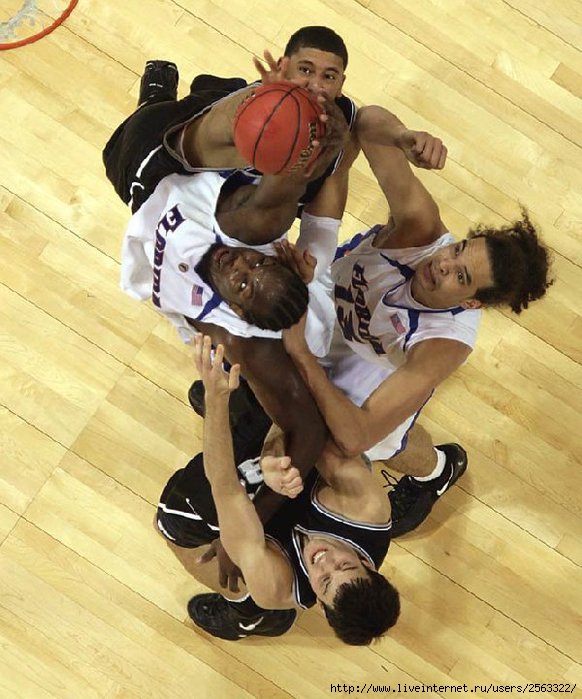
1. Initial acquaintance and learning exercises in simplified conditions, using simple ball games.
2. Training basic techniques, but with the inclusion of elements that reproduce real game environment.
3. Execution exercises in competition conditions (for accuracy, correctness, speed, etc.).
4. Implementation exercises with the opposition of the enemy (passive).
5. Application learned technique in the game.
For training technical and tactical actions we offer the following outdoor games .
1. "Talking with a ball". Two players - tally, when passing the ball to each other, they try to catch up and “bump” with the ball one of the fleeing players (you can’t: throw the ball at a player, take more than two steps with ball). The one who is "tarnished" joins the salks. The game continues until do not "fake" all participants.
Purpose of the game : improvement of catching and passing the ball in various ways, the formation of elementary tactical skills, education of attention and speed.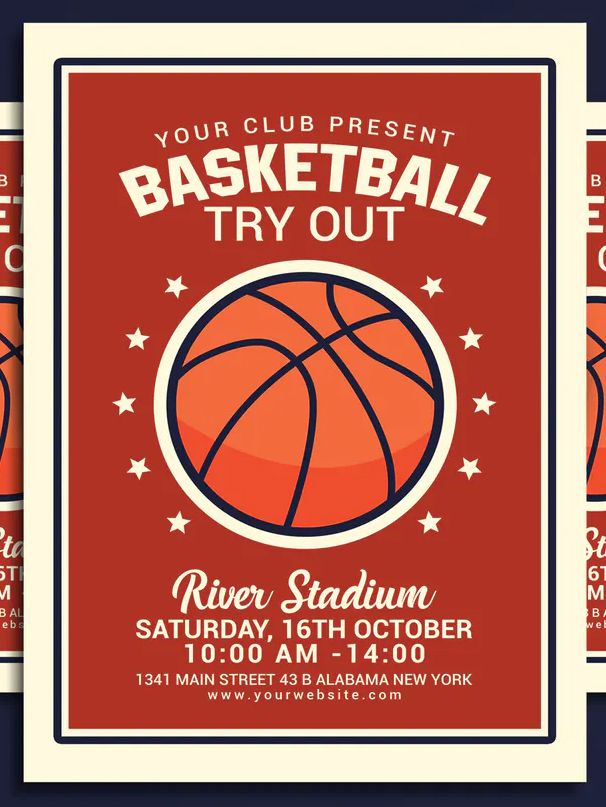
2. Interceptors. The players are divided into two teams and are located with the balls on the front lines. Two player (interceptors (without the ball)) are located in the center of the court at the level center line. The task of those involved is to overcome the area with the ball and attack the ring without allowing yourself to be “bumped” by interceptors when crossing center line. Interceptors have the right to move along the central lines and "salt" the running players at a distance of two meters in both directions from the center line. Having "taunted" someone with the ball, they change places. game can be carried out on time, involved count the number of crossings of the center grounds and hits in the basket (one throw for each ring).
Purpose of the game : improvement dribbling, throwing, instilling defensive skills.
3. "Fifteen". One player (driver) without the ball must "blow" any player who is not in possession of the ball. The task of others players with the help of passes to have time to bring the ball to the player who is trying to "bump" the leader.
The task of others players with the help of passes to have time to bring the ball to the player who is trying to "bump" the leader.
Purpose of the game: training and improving the technique of passing and catching the ball, the technique of moving with the ball and without the ball, making tactical decisions. The game can be used in advanced variant, replacing a basketball with a medicine ball weighing 2-3 kg, which will allow work not only on the elements of basketball technique, but also to develop speed-strength qualities.
Many mobile games can be found in the literature or online resources. Let's single out the following ones:
"Ball average”
The game requires two basketballs. The players are divided into two equal teams, each of them lines up in a circle at arm's length or wider. Players in both circles are calculated by numbers. The first numbers become the middle of their circles with the ball in their hands. At the signal of the head of the central players in circles throw the ball to the second numbers, receive it from them back, thrown third, also received back, etc. When the center the player receives the ball from the last player, he passes it to the second player and changes places with him. The game ends when everyone has been in the role central player.
When the center the player receives the ball from the last player, he passes it to the second player and changes places with him. The game ends when everyone has been in the role central player.
Regulations games. 1. The ball can be passed in any predetermined way. 2. The ball must be tossed to all players in strict sequence.
"Ball captain"
Players share into two equal teams. In each, a captain and a catcher are chosen. At the center circle become captains. On a signal from the leader, the ball is thrown onto the court. Having taken possession of the ball, the players of each team seek to pass the ball as as close as possible to your catcher and throw the ball to him so that he catches it on the fly. When the catcher of one of the teams catches the ball on the fly, the game starts again from the center courts, and for catching the ball by the catcher, the team receives a point. The team wins receiving more points.
Regulations games.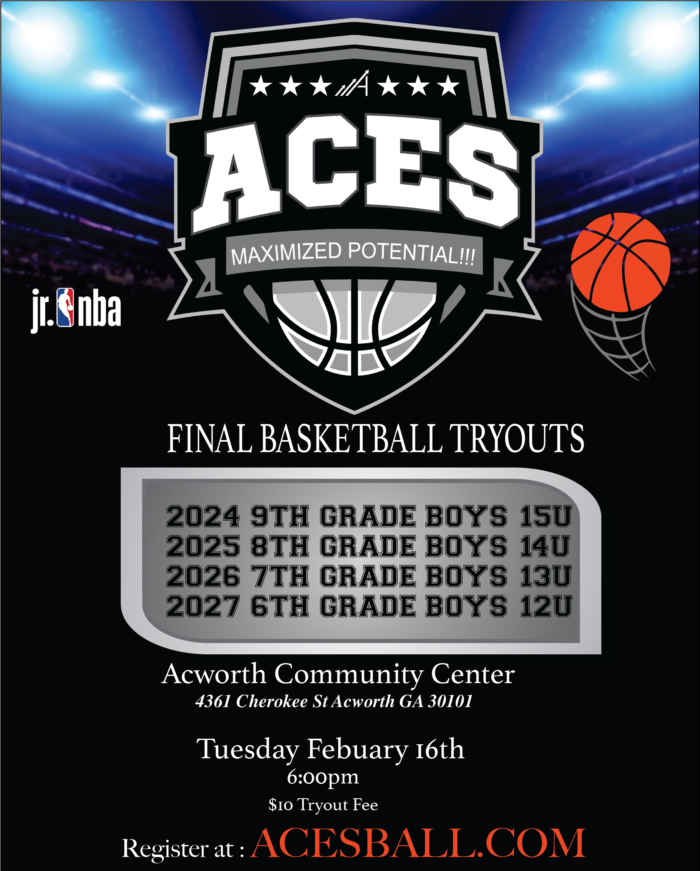 1. Running with the ball is not allowed, the player can do no more than two steps, and on the third - to pass the ball. 2. The ball is considered caught if the catcher caught him from the air or after rebounding from the enemy. 3. If two players grab the ball at the same time, a dropped ball is called.
1. Running with the ball is not allowed, the player can do no more than two steps, and on the third - to pass the ball. 2. The ball is considered caught if the catcher caught him from the air or after rebounding from the enemy. 3. If two players grab the ball at the same time, a dropped ball is called.
Basketball with an inflatable ball"
Two teams (each 4-6 players) randomly position themselves on the basketball court. Captains come out to the middle. The leader throws an inflatable ball between the captains, which goes to one of the teams. Her players, bouncing and knocking the ball with their hands, pass it on to each other. When the ball touches the backboard, the team gets a point. The game lasts 10 minutes with a change of sides of the court after the first 5 minutes of play. The team with the most points wins.
Rules. 1. During jumping, you cannot push other players away, as well as run with the ball in hands. 2. For a violation, the ball is passed to the other team. 3. The game starts at the signal of the leader. 4. If the ball fell on ground, you need to pinch it with your feet again and continue the game.
3. The game starts at the signal of the leader. 4. If the ball fell on ground, you need to pinch it with your feet again and continue the game.
Attack fives"
At the basketball Three teams are playing on the court. 2nd and 3rd fives under their shield build zone protection. The ball is with the players of the 1st five, located in an arbitrary in order facing the 2nd five. At the signal of the leader, the players of the 1st five attack the shield of the 2nd five, trying to throw the ball into the basket. Once the players of the 2nd five manage to intercept the ball, they, stopping, attack shield of the 3rd five. The 1st five who lost the ball build a zone defense in place of the 2nd fives. The 3rd five, having taken possession of the ball, starts an attack on the 1st five. The game lasts 10-15 minutes.
Regulations games. 1. The game starts on the leader's signal. 2. The game is running by the rules of basketball.
"Fifteen"
Players stand in a circle at arm's length.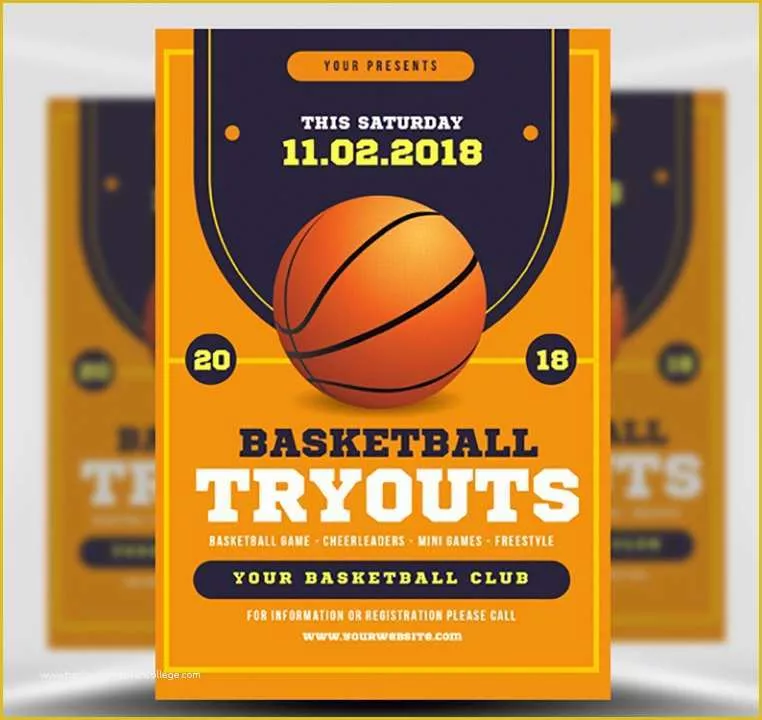 A line is drawn in front of their toes. In the center of the circle - 2-4 drivers. If no more than 10 people play, then choose one driver. Those standing in a circle receive the ball. The players throw the ball to air and roll it on the ground so that the drivers could not reach it touch. The task of the drivers is to grab the ball or “tarnish” it. If anyone succeeds, then the player in whose throw the ball was "stained". And the driver takes his place.
A line is drawn in front of their toes. In the center of the circle - 2-4 drivers. If no more than 10 people play, then choose one driver. Those standing in a circle receive the ball. The players throw the ball to air and roll it on the ground so that the drivers could not reach it touch. The task of the drivers is to grab the ball or “tarnish” it. If anyone succeeds, then the player in whose throw the ball was "stained". And the driver takes his place.
“Sent – sit down”
The players share into two equal teams and line up in columns one at a time, one in parallel another. Each team chooses a captain who stands in front of his team at a distance of 5-8 steps. The captains have the ball in their hands. At the command of the leader the captain passes the ball to the first player in the column, who catches it, then returns it back to the captain and immediately assumes a crouching position. Every player who made the return transmission, takes the position of the stop crouching. When is the last in a column, the player gives the ball to the captain, then lifts it up. Whole team quickly stands up.
When is the last in a column, the player gives the ball to the captain, then lifts it up. Whole team quickly stands up.
Team wins finished passing the ball first without violating the rules.
Rules. 1. No one should skip their turn. 2. The player who did not catch the ball must run after him.
"Talking back to the shield"
Leading tries to "snap" the players who run around the court. However, players it is allowed to move with an attached or any other step, turning with their backs to the shield on the half of the platform of which they are located. "Salted" becomes a leader and can “salt” any player, except for the one who “salted” him.
Over bumps
On the floor with chalk draw small circles (“hummocks”), placing them at a distance from each other a small step along a broken line. During the relay race, players, jumping from foot to leg, overcome the "swamp" of the bumps and come back.
For fastening movement skill with a change in direction, you can use the "relay-snake", during which players without the ball (and later with the ball) run around at speed clubs, stuffed balls, or other objects. Running can be done face and back forward, with turns for reverse movement.
Running can be done face and back forward, with turns for reverse movement.
"Rebound"
3 m from each shield (walls) mark circles one after another according to the number of participants in teams. AT players get up in circles. If there are four in the team, then the player farthest from the shield (with the ball in hands) has number 4, and the one closest to the shield is number 1. At the signal of the leader players from the last circles throw (from behind the head or in another way) the ball into the backboard in such a way that he is caught by the player standing in front of him (3). That catches the ball with both hands and throws it again at the backboard for player 2 to catch. When the ball reaches the first player in the column, he, having caught the ball, runs with it (hitting the ground) to player 4's seat, and everyone moves forward one circle. The player who appeared the last, starts the combination again, after which the player goes to the end of the column 2. The game ends when player 4, who is in front and catches the ball, will return to his circle and lift the ball up. You can make the game more difficult by allowing throw the ball at the backboard only while jumping.
The game ends when player 4, who is in front and catches the ball, will return to his circle and lift the ball up. You can make the game more difficult by allowing throw the ball at the backboard only while jumping.
The game is also played in the reverse order, that is, from the beginning player 1 throws the ball at the backboard, etc.
“40 hits”
All players are divided into four teams, two for each main shield. At the first numbers - by ball. Players need to hit the ring 40 times in total - 10 hits from four different points. 1 point is awarded for each hit. After 10 successful throws participants of one of the teams announce the winner of the first series of throws and the number of hits is counted. Then the teams switch places, the game continues. The condition must be met: the player who threw the ball must catch him without letting him fall to the ground regardless of whether he hit the basket and pass the ball to a partner. For each drop of the ball on the court, the team loses 1 point.
Experience with schoolchildren shows: one of the main reasons that causes desire to play is a feeling of joy resulting from various and multilateral emotional moments accompanying the process of the game. During game, we avoid the path of multiple repetitions of the exercise, which is often causes a kind of psychological "stagnation", loss of interest due to natural reaction of the body to the monotony of training sessions. But as soon as the teacher will change the form of the lesson, start competitions for speed, agility and accuracy, begins to conduct a game or relay race, that is includes an "emotional lever", those involved forget about fatigue, continue classes with desire and interest.
Marina TSEDRICK,
senior teacher of the Department of Physical Education and Sports of the Belarusian of the state university www.adv.rbc.ru
www.adv.rbc.ru
Sport
TV channel
Newspaper
Pro
Investments
RBC+
New economy
Trends
Real estate
Sport
Style
National projects
City
Crypto
Debating Club
Research
Credit ratings
Franchises
Conferences
Special projects St.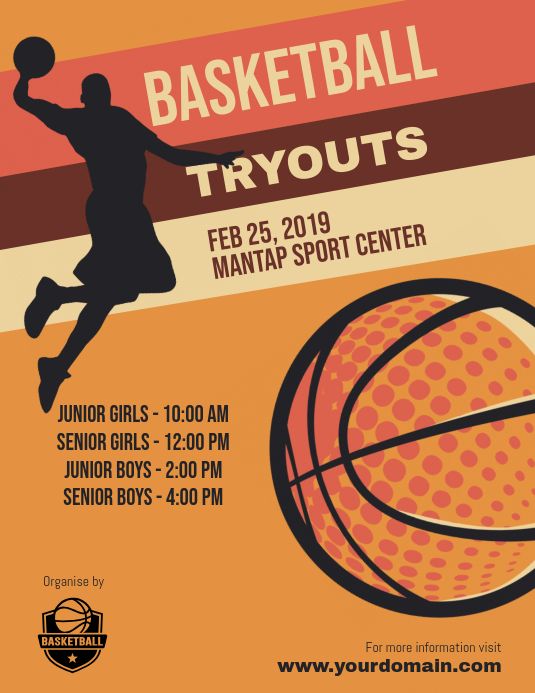 Petersburg
Petersburg
Conferences St. Petersburg
Special projects
Checking counterparties
RBC Library
Podcasts
ESG index
Politics
Economy
Business
Technology and media
Finance
RBC Company
www.adv.rbc.ru
www.adv.rbc.ru
Governor of the Moscow Region Andrey Vorobyov on Monday announced a ban on spectators attending sporting events
Follow us at
News
Photo: Global Look Press
Khimki Basketball Club may host Euroleague home matches in Moscow due to the ban on spectators attending sports events in the Moscow region. This was stated to RBC by the general director of the club Pavel Astakhov, answering the question whether he is considering the opportunity to play in Moscow with the audience.
This was stated to RBC by the general director of the club Pavel Astakhov, answering the question whether he is considering the opportunity to play in Moscow with the audience.
On Monday, Moscow Region Governor Andrei Vorobyov announced new restrictions in the region, including a ban on spectators from attending sporting events.
“It's not easy to do. We need to find an arena,” Astakhov emphasized, answering a question about the possibility of holding Euroleague games with fans in Moscow. — We had experience of holding matches at the VTB Arena. Now we will work on this issue, but, as far as I know, the situation at the arena is also difficult. And no one will give guarantees that the stands will not be closed in Moscow.”
The club plays home matches of the VTB United League in Khimki, and the Euroleague matches at the 7,000-seat arena in Mytishchi.
In Moscow during sporting events it is allowed to fill the stands by 50%. But subject to the social distancing rule, the actual capacity limit can be reduced to around 30%.